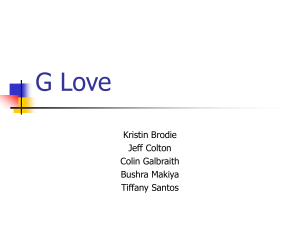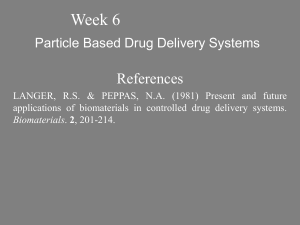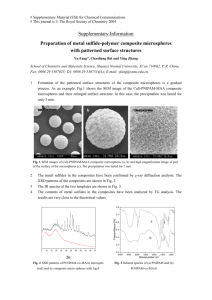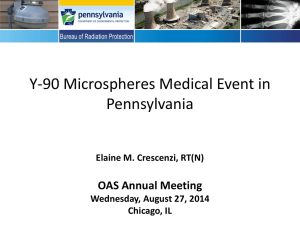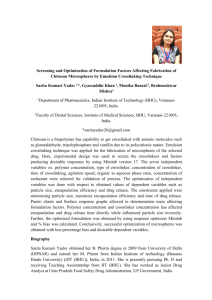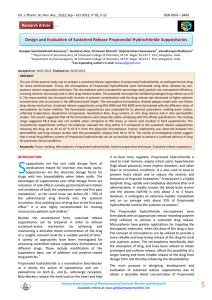Porous microspheres - PrescottOChem
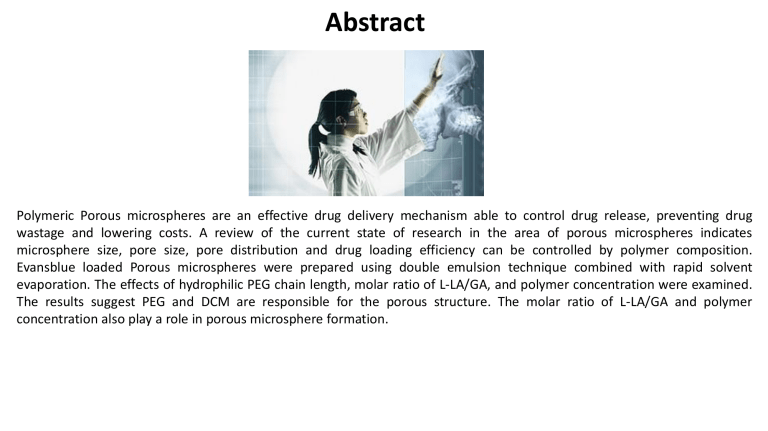
Abstract
Polymeric Porous microspheres are an effective drug delivery mechanism able to control drug release, preventing drug wastage and lowering costs. A review of the current state of research in the area of porous microspheres indicates microsphere size, pore size, pore distribution and drug loading efficiency can be controlled by polymer composition.
Evansblue loaded Porous microspheres were prepared using double emulsion technique combined with rapid solvent evaporation. The effects of hydrophilic PEG chain length, molar ratio of L-LA/GA, and polymer concentration were examined.
The results suggest PEG and DCM are responsible for the porous structure. The molar ratio of L-LA/GA and polymer concentration also play a role in porous microsphere formation.
Advantages of Porous Microspheres
Small material (50-200nm) that has a high surface area.
More able to interact with environment.
Biodegradable. Safely degenerate by surface erosion.
Important feature when toxic drug is present.
Pores can be loaded with drugs.
Advantages of Pores
The size of the channel can change the release kinetics.
If the channel size is similar to the size of the drug molecule being released only one molecule will be released at a time.
The drug release will allow a therapeutic range to be consistently reached preventing drug wastage and lowering costs
Procedure
o Amphiphilic triblock copolymer poly(lactide-co-glycolide-b-
ethylene glycol-b-lactide-co-glycolide) (PLGE) were synthesized by a ring opening polymerization of lactate (LA) and glycol (GA) in the presence of polyethylene glycol (PEG).
+ +
L-Lactide (L-LA) Glycolide (GA)
Polyethylene glycol (PEG)
Molecular weights of:
1000, 2000, 4000 o Seven different copolymers were synthesized using varied
PEG lengths and molar ratios of LA, GA, and PEG.
Preparation of porous microspheres
Double emulsion (W/O/W) combined with rapid solvent evaporation
Homogenized at 1500 rpm for 1hr
Then 500 rmp for 2hr at 40c
.02 g Evansblue
1 mL deionized water
.2 g PLGE dissolved in 6 mL dichloromethane (DCM)
200 mL 1% polyvinyl alcohol (PVA)
No pore forming agents! Controlled completely by composition of copolymers
To confirm PEG chains create porous structures only hydrophobic PLGA was used.
The effects of DCM were also tested.
(A) SEM images of PLGA microspheres prepared by a modified double emulsion
(W/O/W)-solvent evaporation technique; (B) SEM images of PLGE porous microspheres prepared by increasing the volume of DCM to 1.5 times.
These results suggest PEG and DCM effect the porous structure.
Does temperature effect formation of porous microspheres?
When prepared at 40c and room temperature the porous microspheres prepared
At 40c had double drug encapsulation efficiency then when prepared at room temperature.
Effects of varied hydrophilic PEG length
PLGE-2, PLGE-5, PLGE-7
Same molecular weight
PLGE-2
PEG=1000
PLGE-5
PEG=2000
PLGE-7
PEG=4000
With increase PEG length microspheres evolved irregularly with wrinkly surfaces.
Effects of molar ratio of LA/GA
50/50, 70/30, 90/10
Same molecular weight
50/50 70/30 90/10
When the molar ratio was 50/50 the microspheres were irregular and wrinkly.
As the molar ratio of LA increased the microspheres were spherical and pore dense.
Effects of polymer concentration
PLGE-2 with different concentrations
25mg/mL, 50mg/mL, 75mg/mL
25mg/mL 50mg/mL 75mg/mL
The size of the porous microspheres increased significantly when the concentration
Increased to 75m/mL.
Application of Microspheres
Drug delivery
Pulmonary drug delivery
Tissue regeneration
Transdermal patches
Arthritis treatment
Many More…
• Prevention - Microspheres prevent drug wastage!
• Design for degradation - Microspheres are biodegradable!
• Safer solvents and auxiliaries - No pore forming agents were used in the making of the microspheres
Sources
• Anderson, J., & Shive, M. (2012). Biodegradation and biocompatibility of PLA and PLGA microspheres. Advanced Drug Delivery Reviews, 64, 72-82.
• Fan, J., Song, Y., Wang, S., Jiang, L., Zhu, M., & Guo, X. (2013). A synergy effect between the hydrophilic PEG and rapid solvent evaporation induced formation of tunable porous microspheres from a triblock copolymer. Royal Society of Chemistry, (2), 629-633.
• Giri, T., Choudhary, C., Alexander, A., Badwaik, H., & Tripathi, D. (2013). Prospects of pharmaceuticals and biopharmaceuticals loaded microparticles prepared by double emulsion technique for controlled delivery. Saudi Pharmaceutical Journal, 21(2), 125-141.
• Zhang, M., Yang, Z., Chow, L., & Wang, C. (2003). Simulation of drug release from biodegradable polymeric microspheres with bulk and surface erosions. Journal of Pharmaceutical Sciences J.
Pharm. Sci., 56, 2040-2056.
